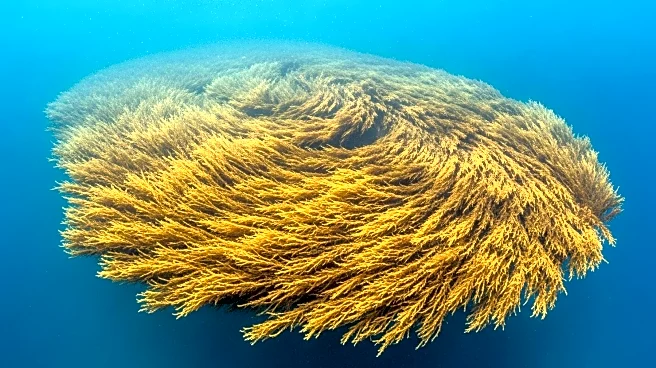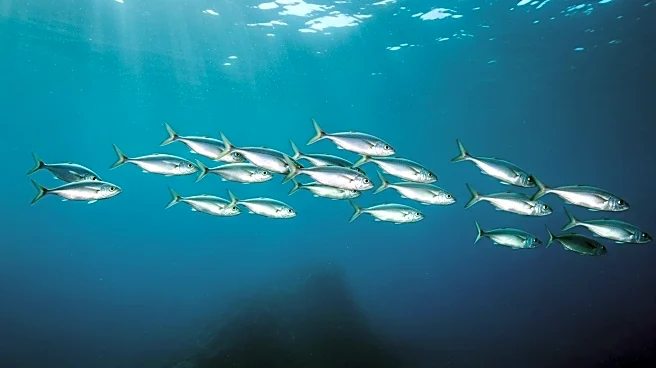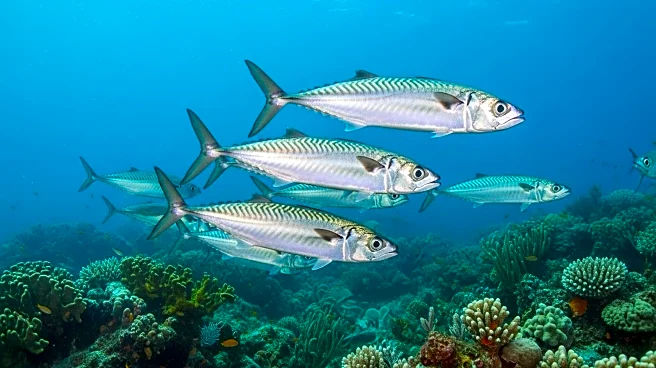What's Happening?
A massive belt of sargassum algae, stretching over 8,850 kilometers from the West African coast to the Gulf of Mexico, has been identified in the Atlantic Ocean. This phenomenon, known as the Great Atlantic Sargassum Belt, has grown significantly since its first major bloom in 2011. The algae thrive in nutrient-rich waters, which are increasingly fed by human activities such as agricultural runoff and wastewater discharge. The expansion of this algae belt poses ecological challenges, as it disrupts marine ecosystems and releases harmful gases when decomposing on shorelines.
Why It's Important?
The rapid growth of the sargassum belt has significant ecological and economic implications. Ecologically, while sargassum provides habitat for marine life, its excessive growth can lead to oxygen depletion and the release of toxic gases, harming both marine and human life. Economically, the algae's presence on beaches affects tourism and local economies, as cleanup efforts are costly and labor-intensive. The situation underscores the broader impact of nutrient pollution and climate change on oceanic health, highlighting the need for sustainable environmental practices.
What's Next?
Scientists and policymakers are likely to focus on mitigating the sources of nutrient pollution contributing to the sargassum growth. This may involve stricter regulations on agricultural runoff and wastewater management. Additionally, there could be increased investment in research to better understand the dynamics of sargassum blooms and develop strategies to manage their impact. Coastal communities may also seek innovative solutions to address the economic challenges posed by the algae.











